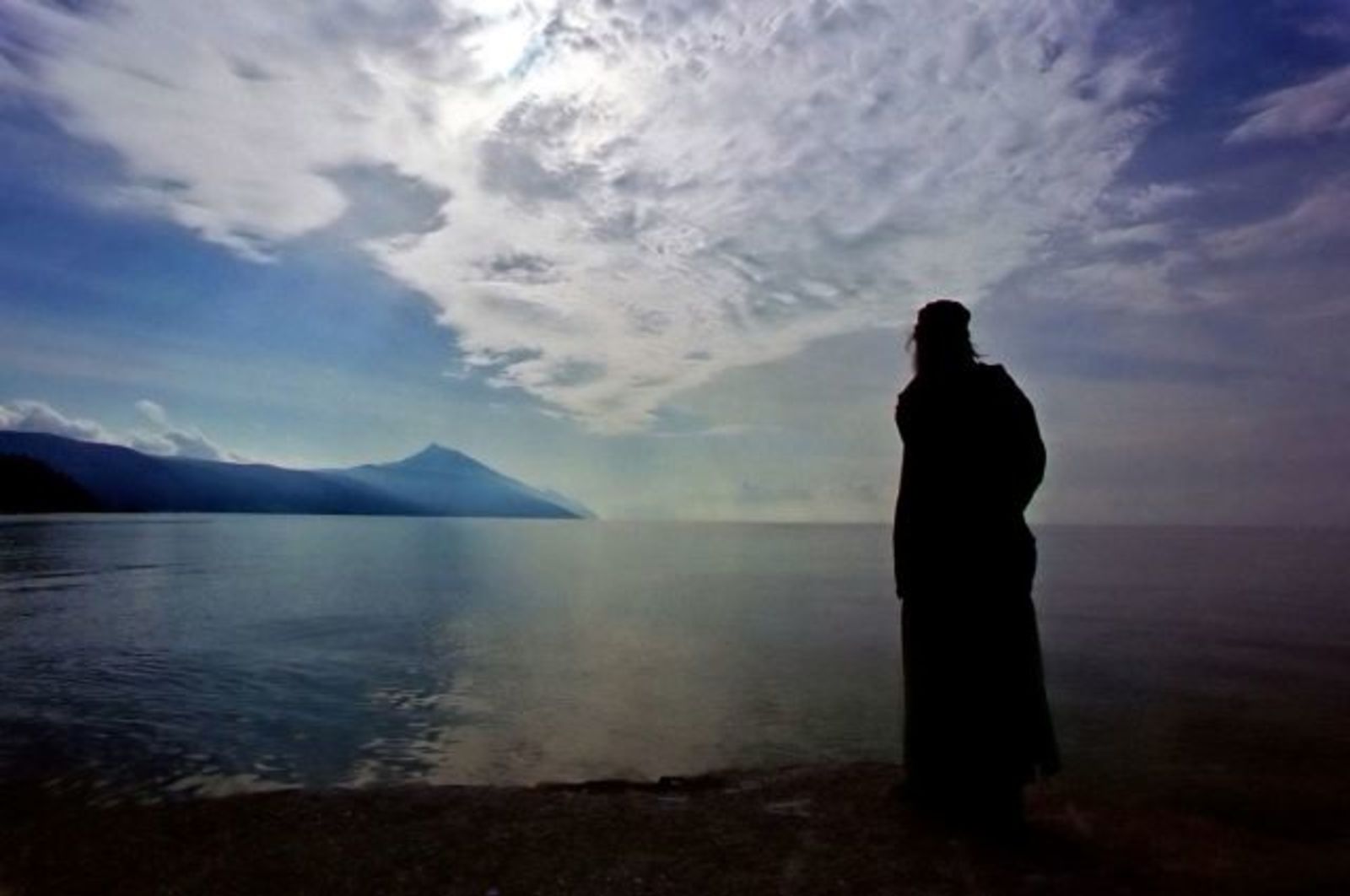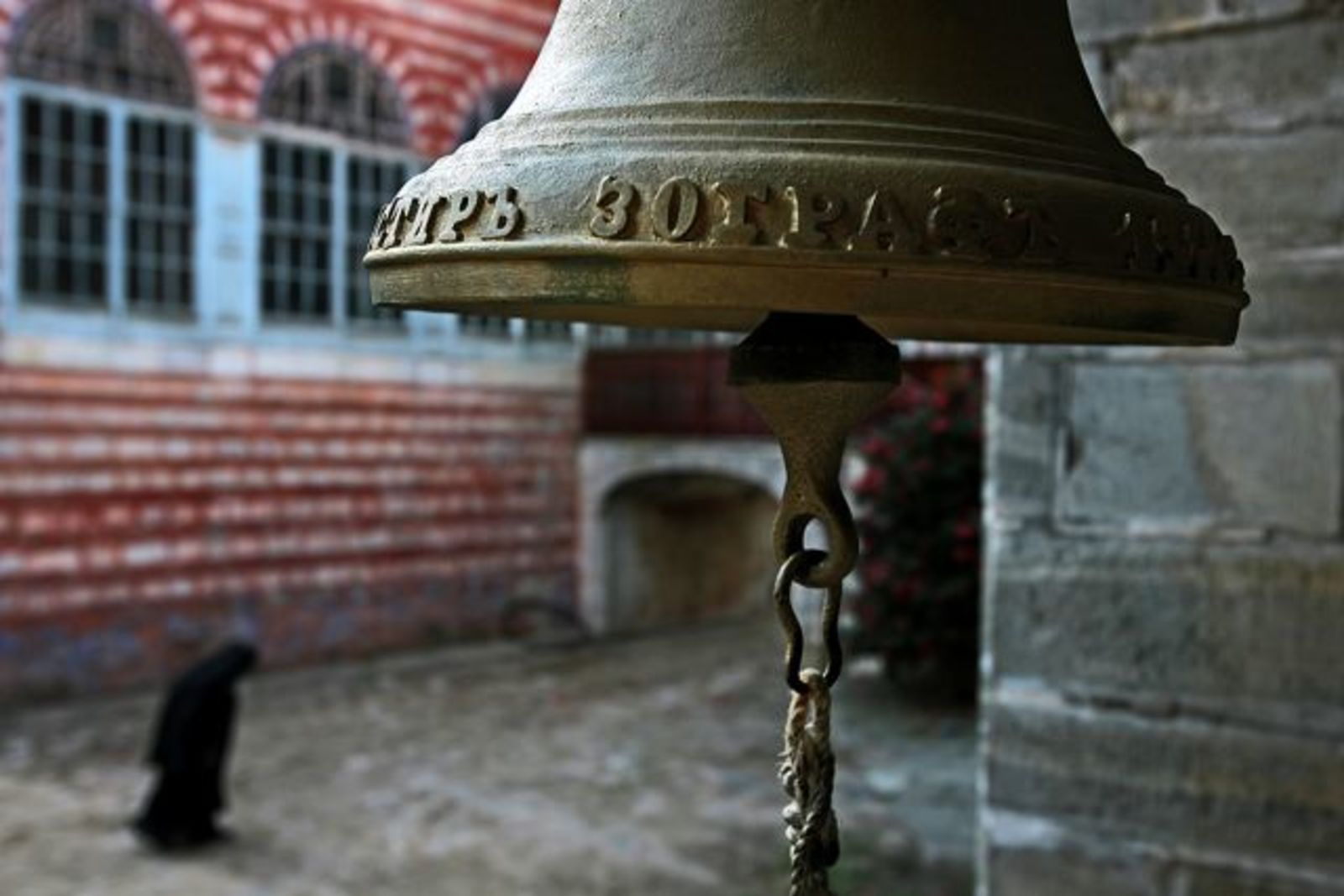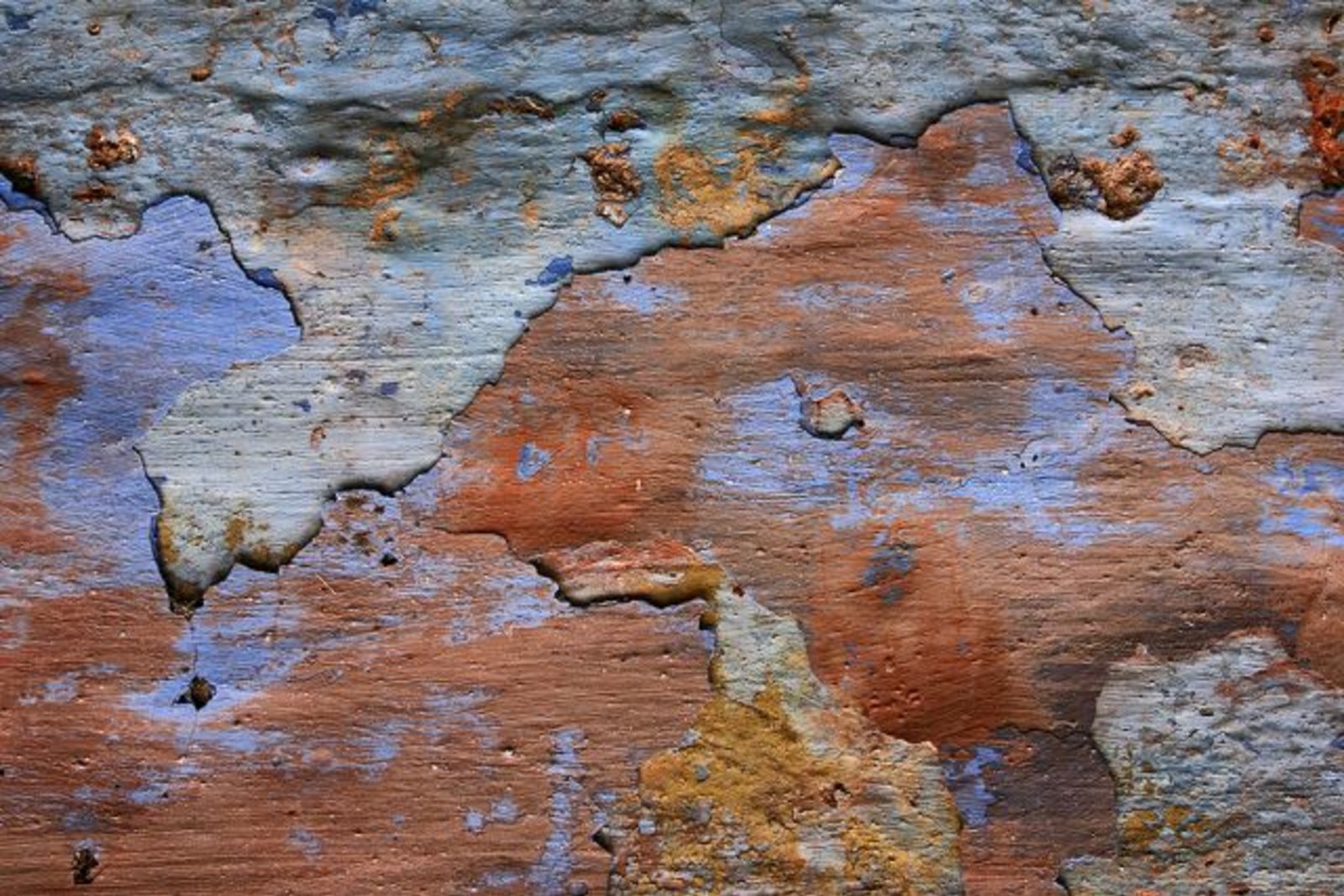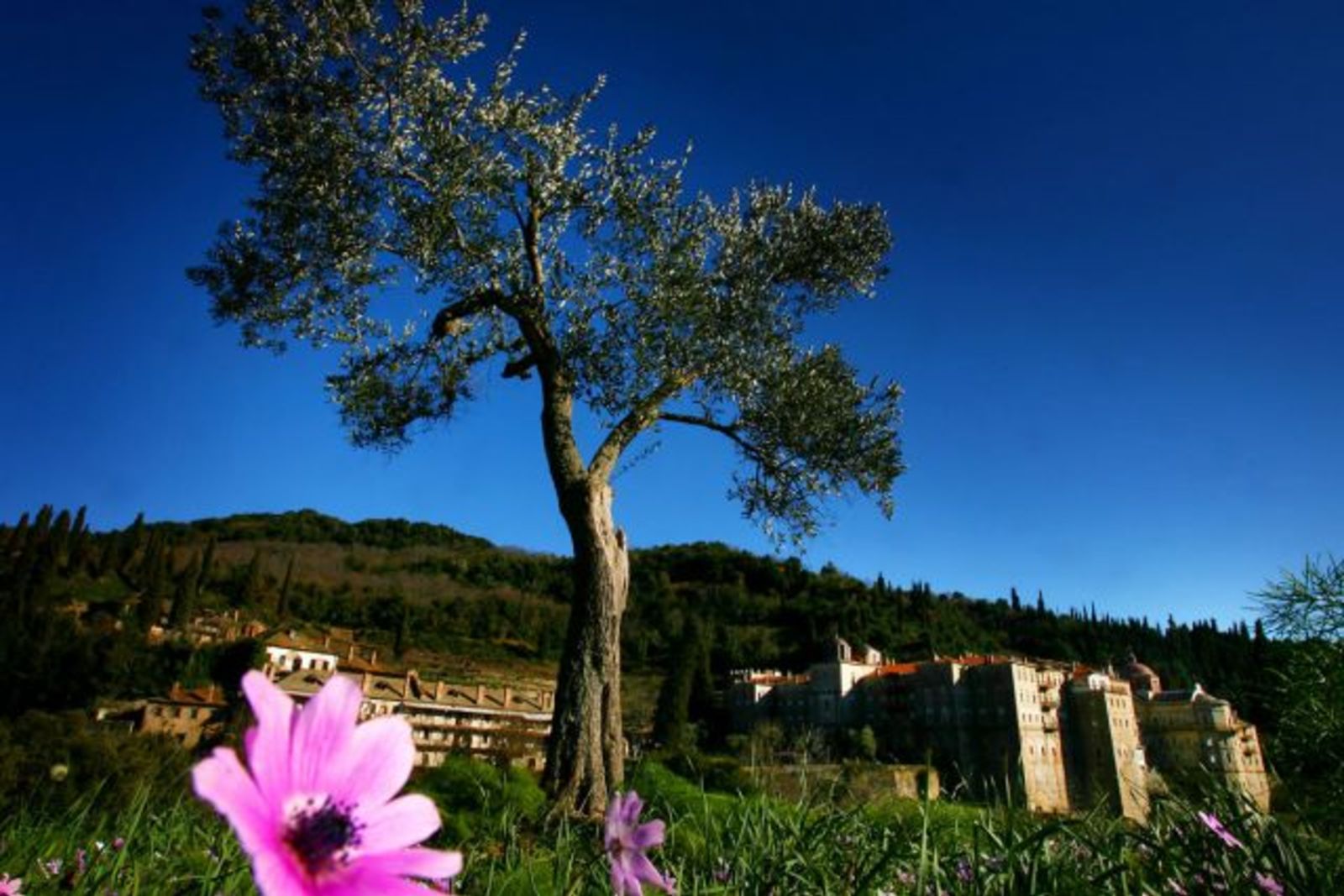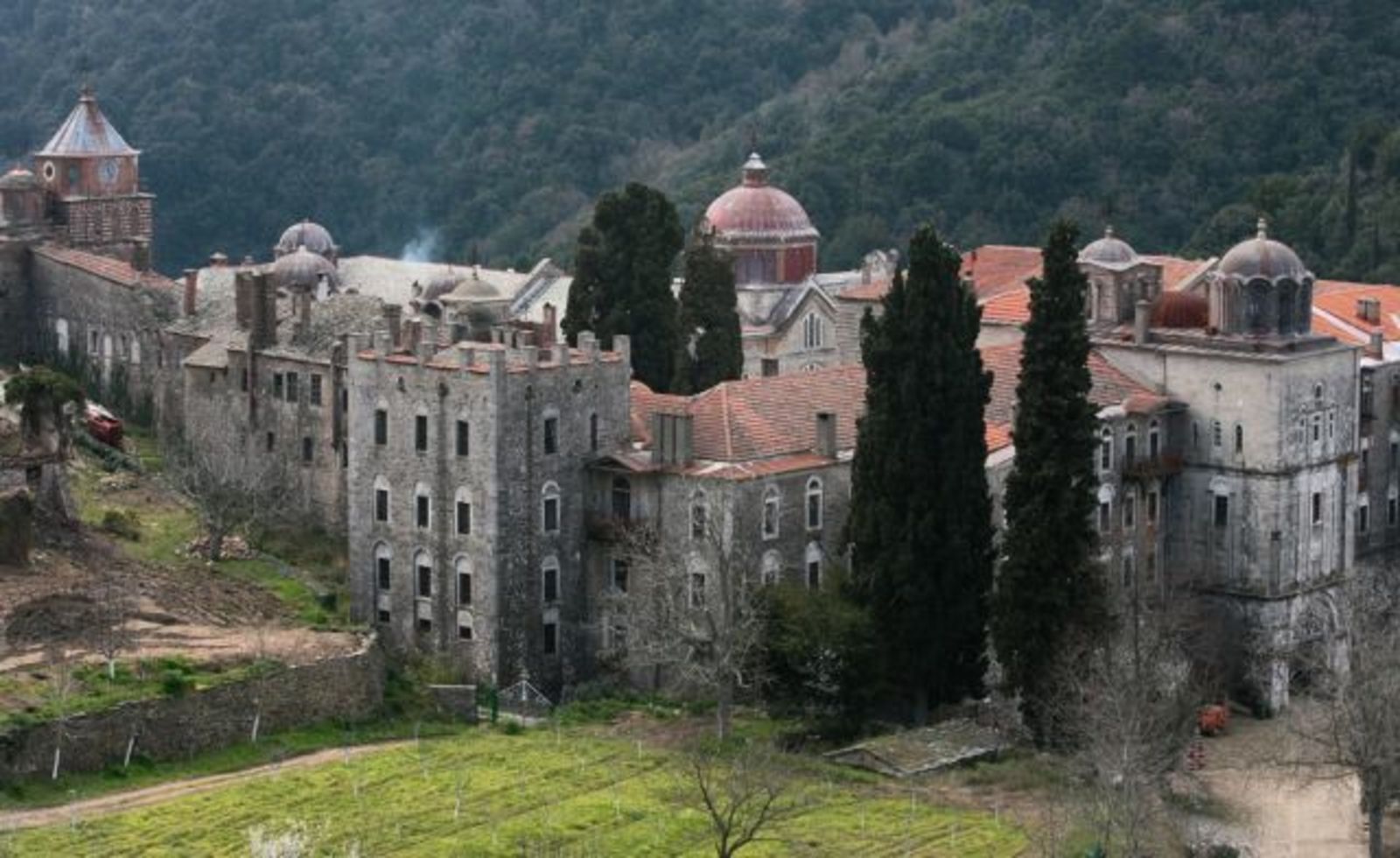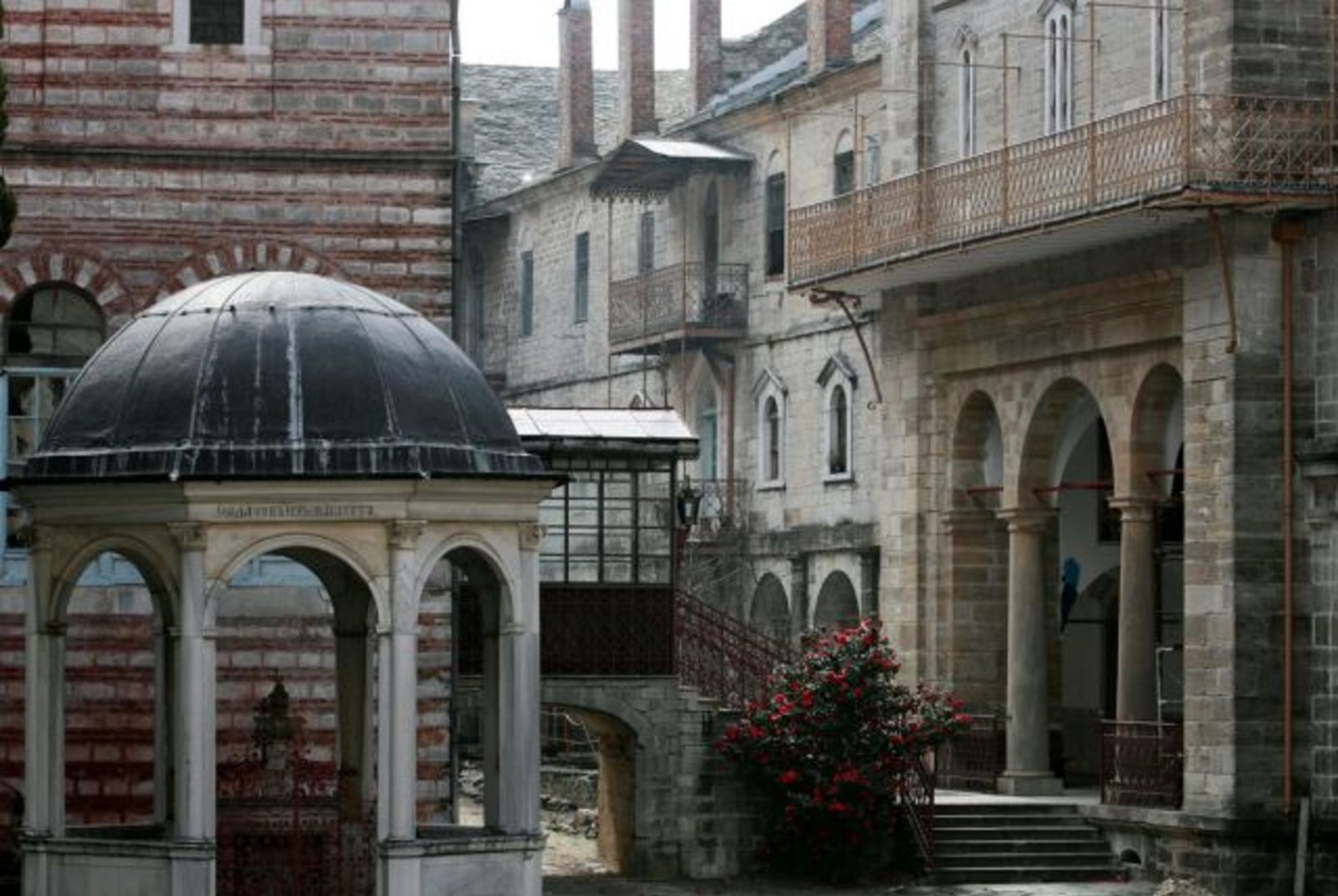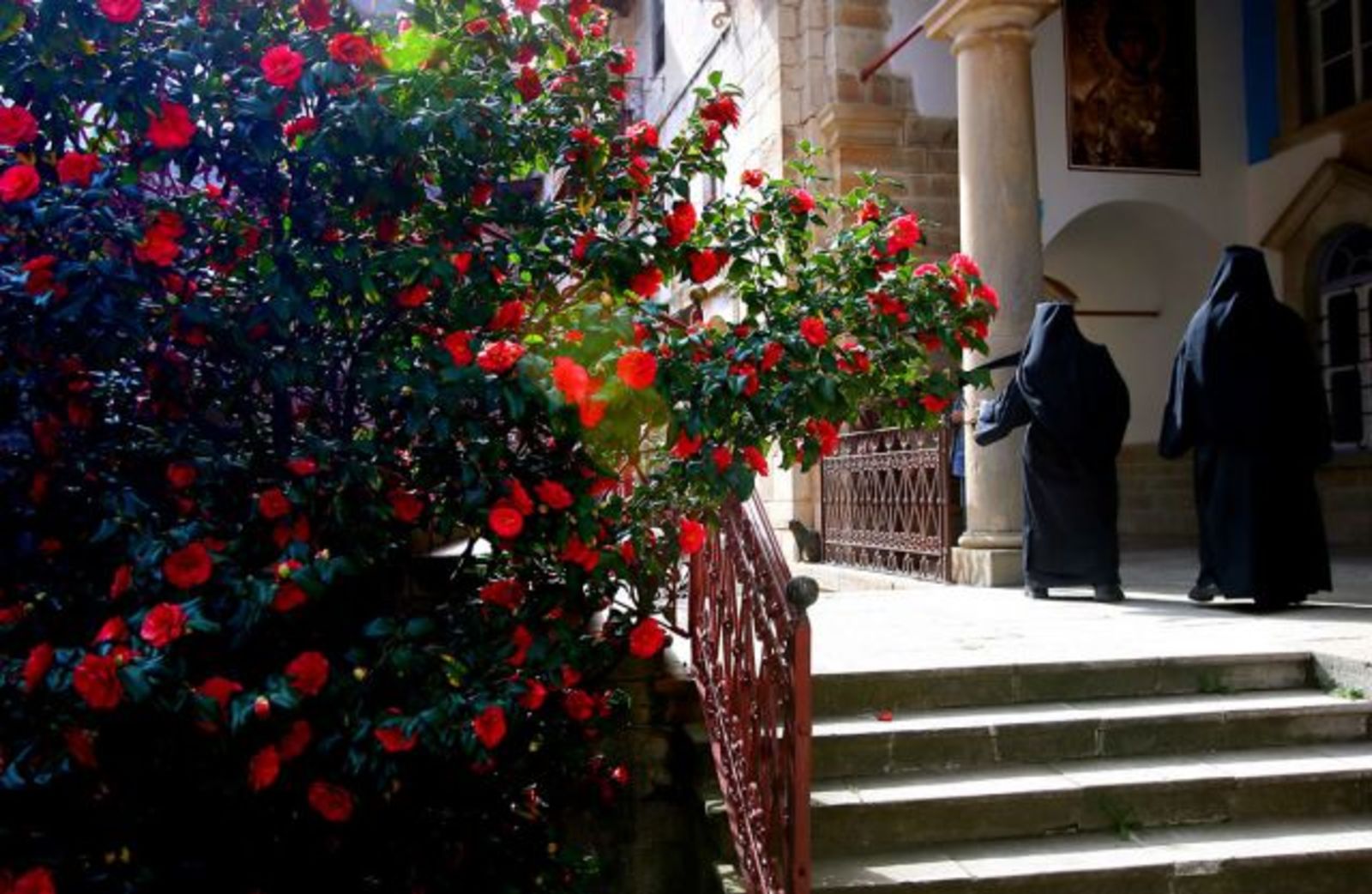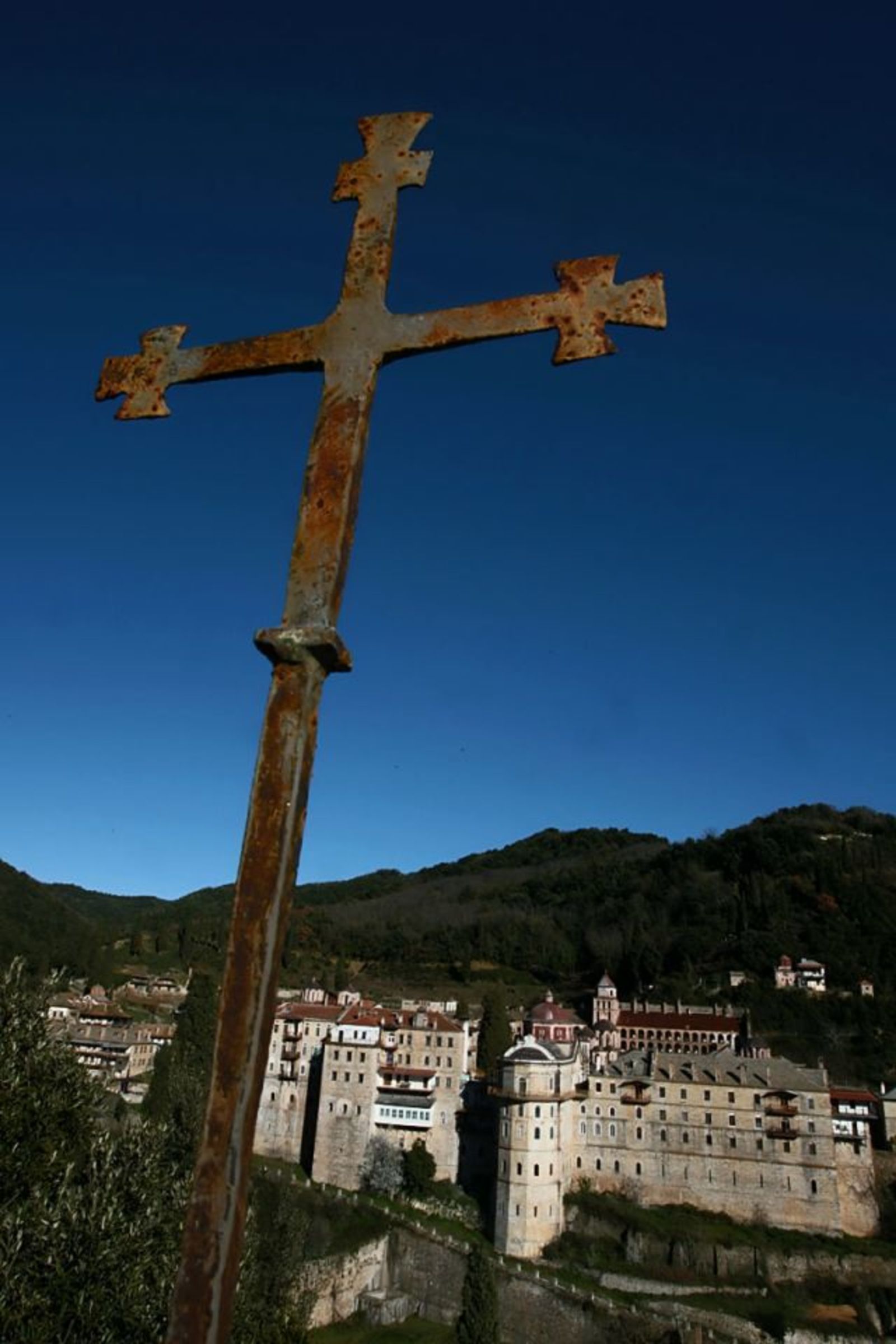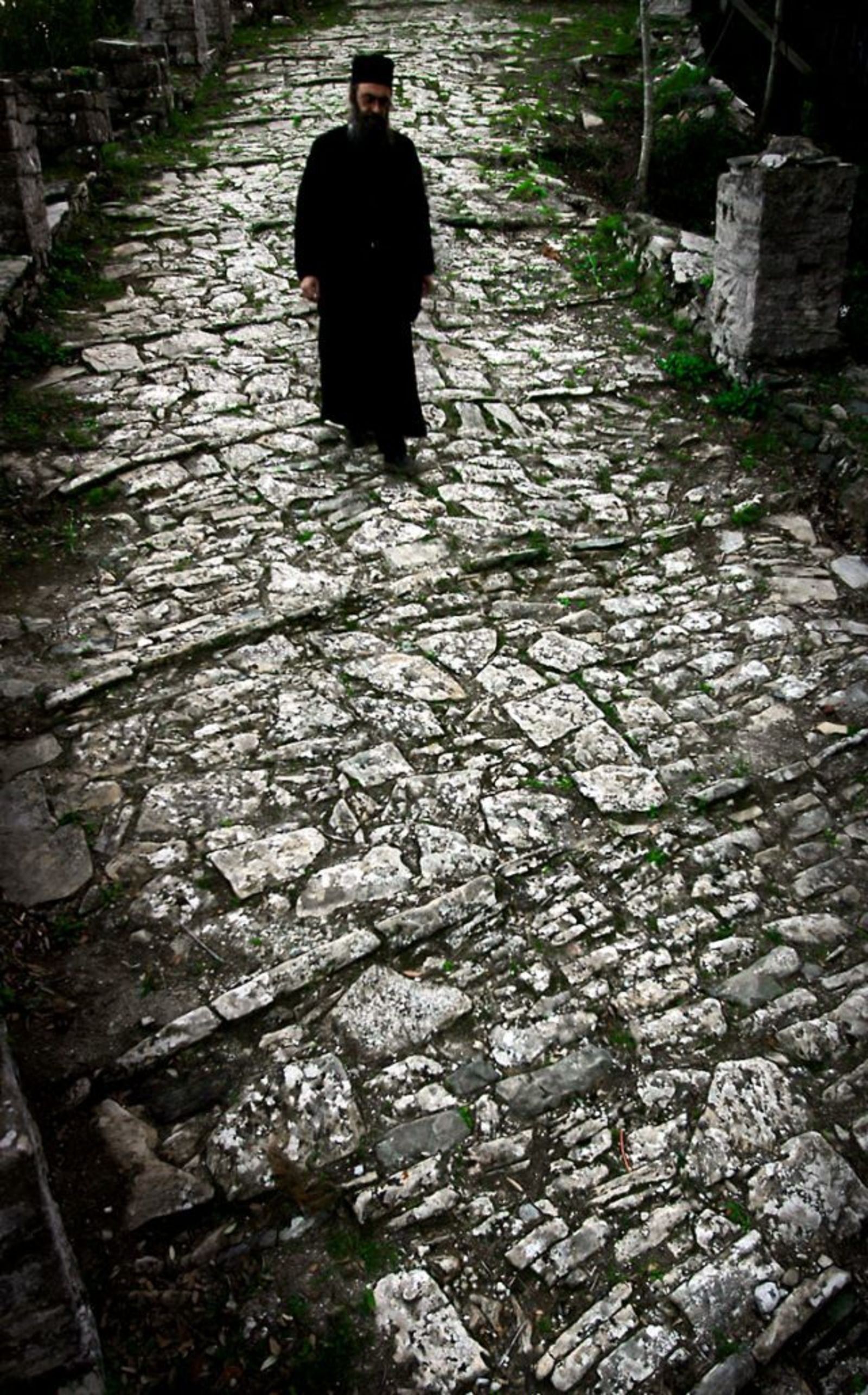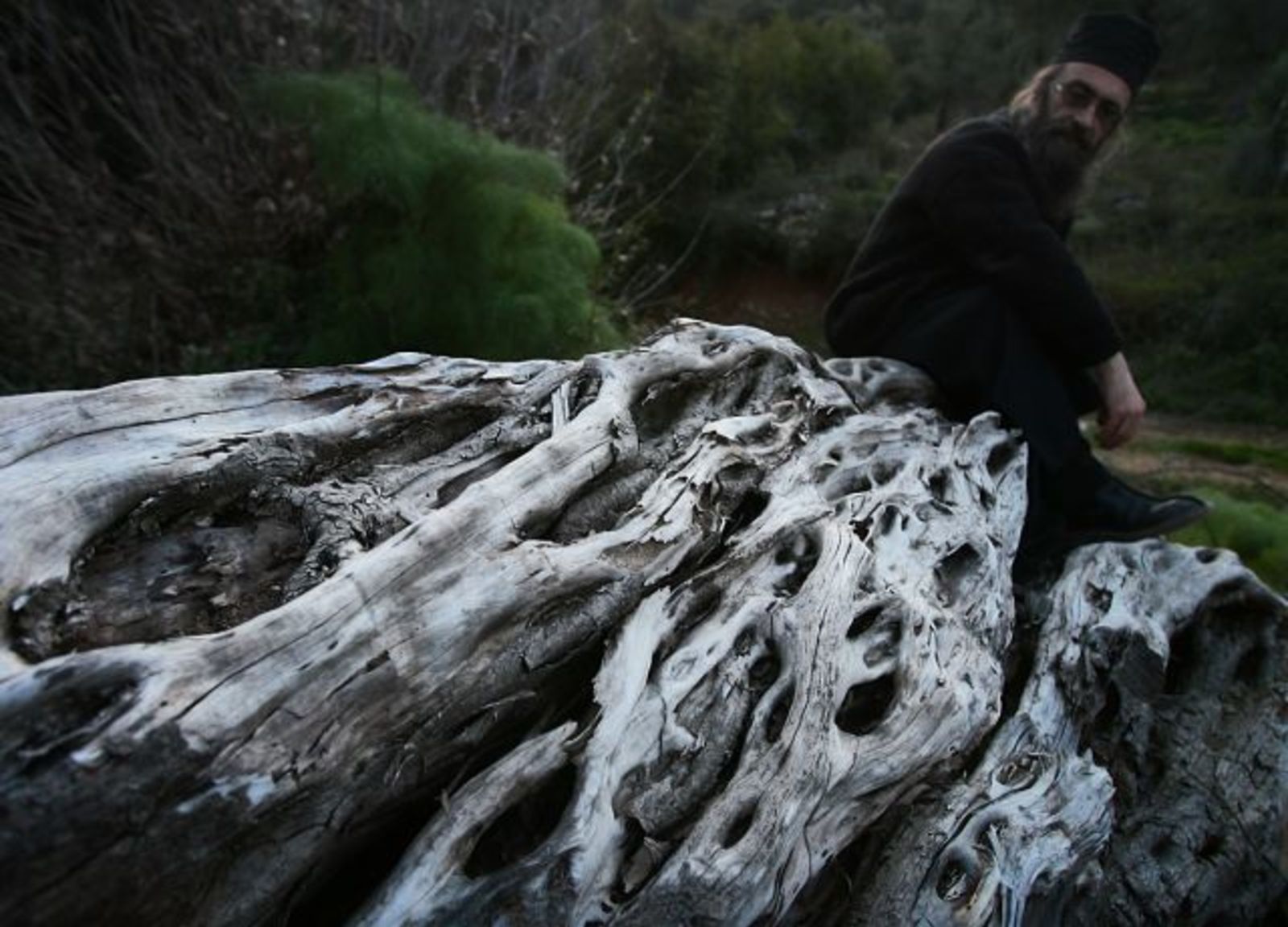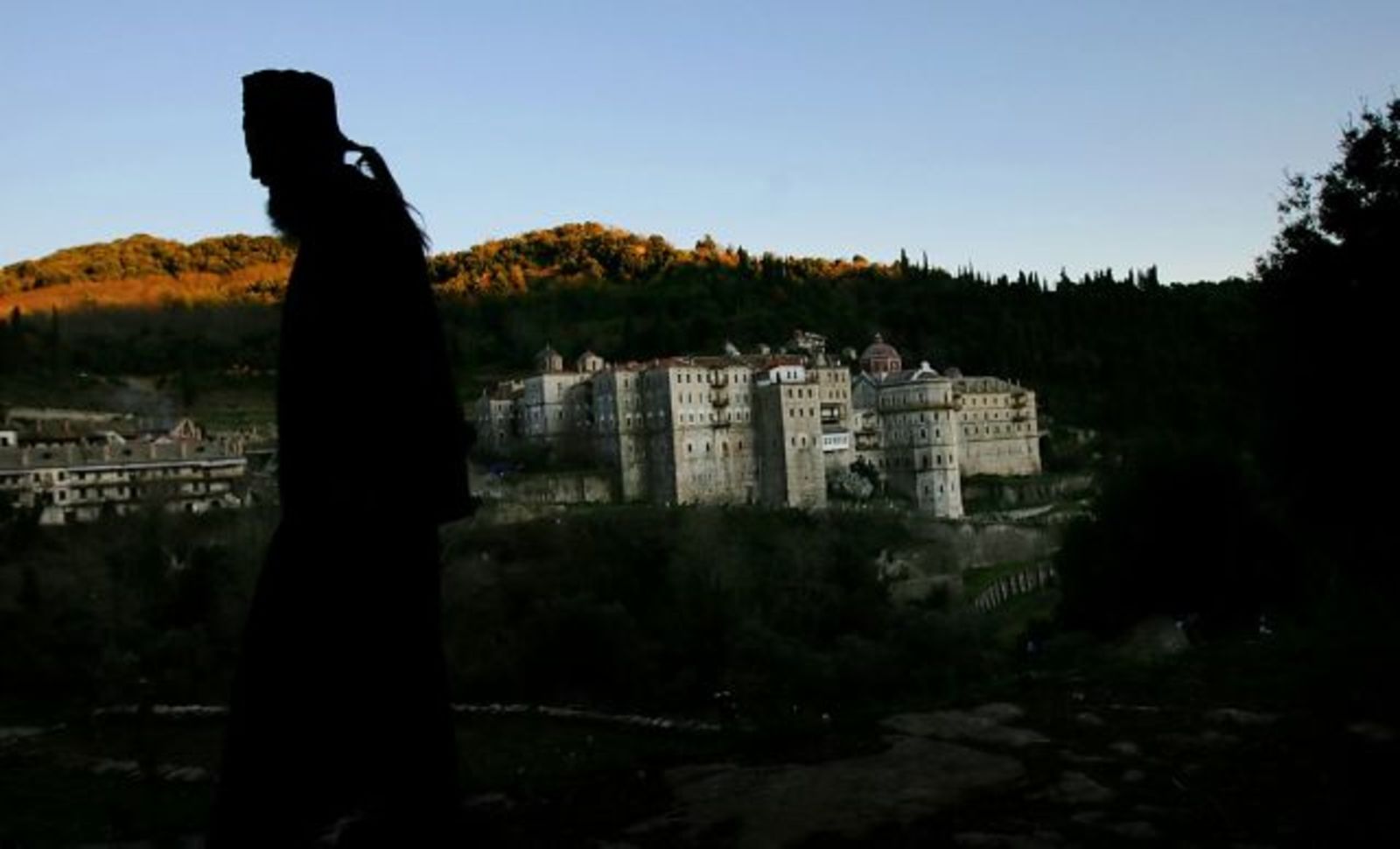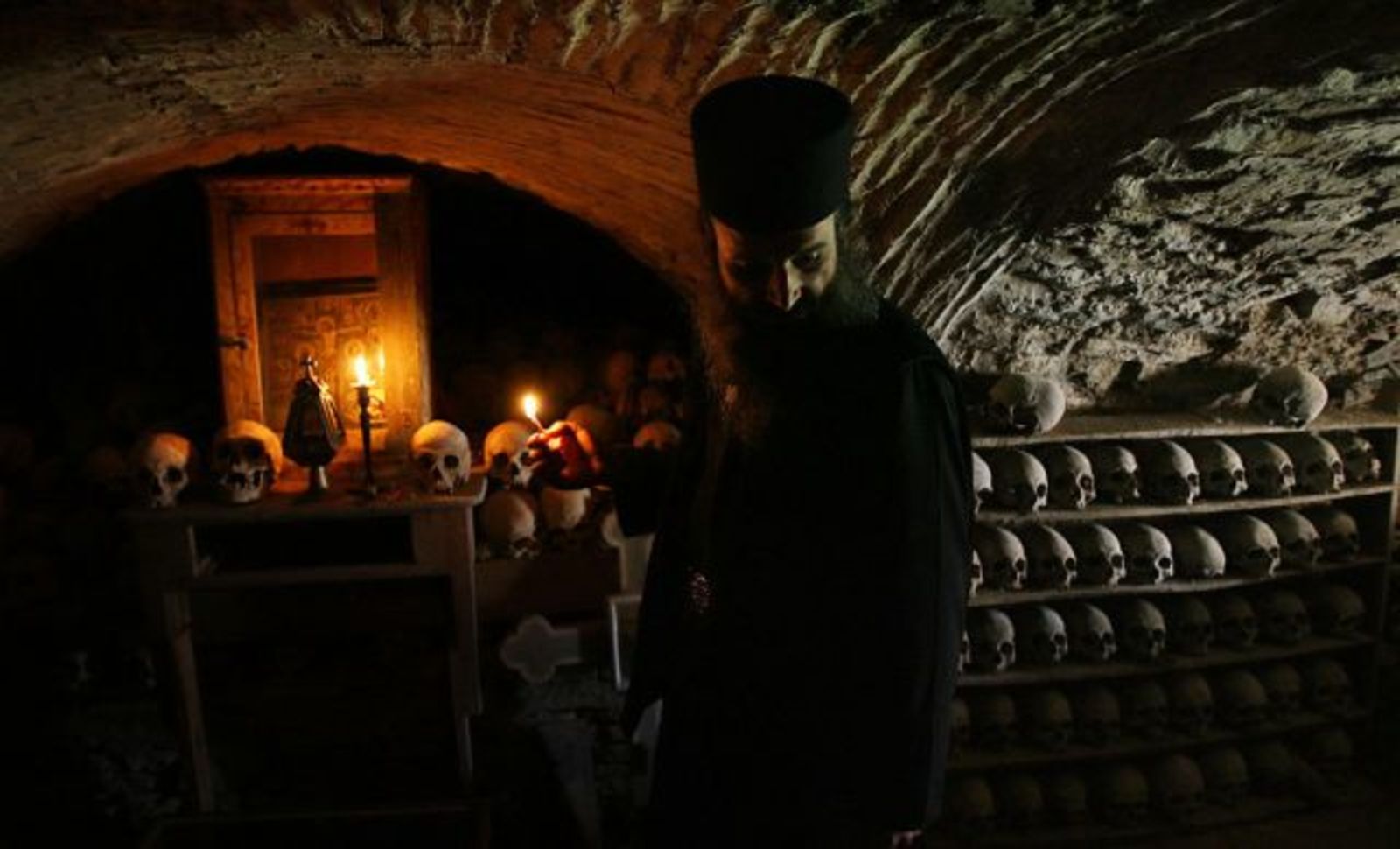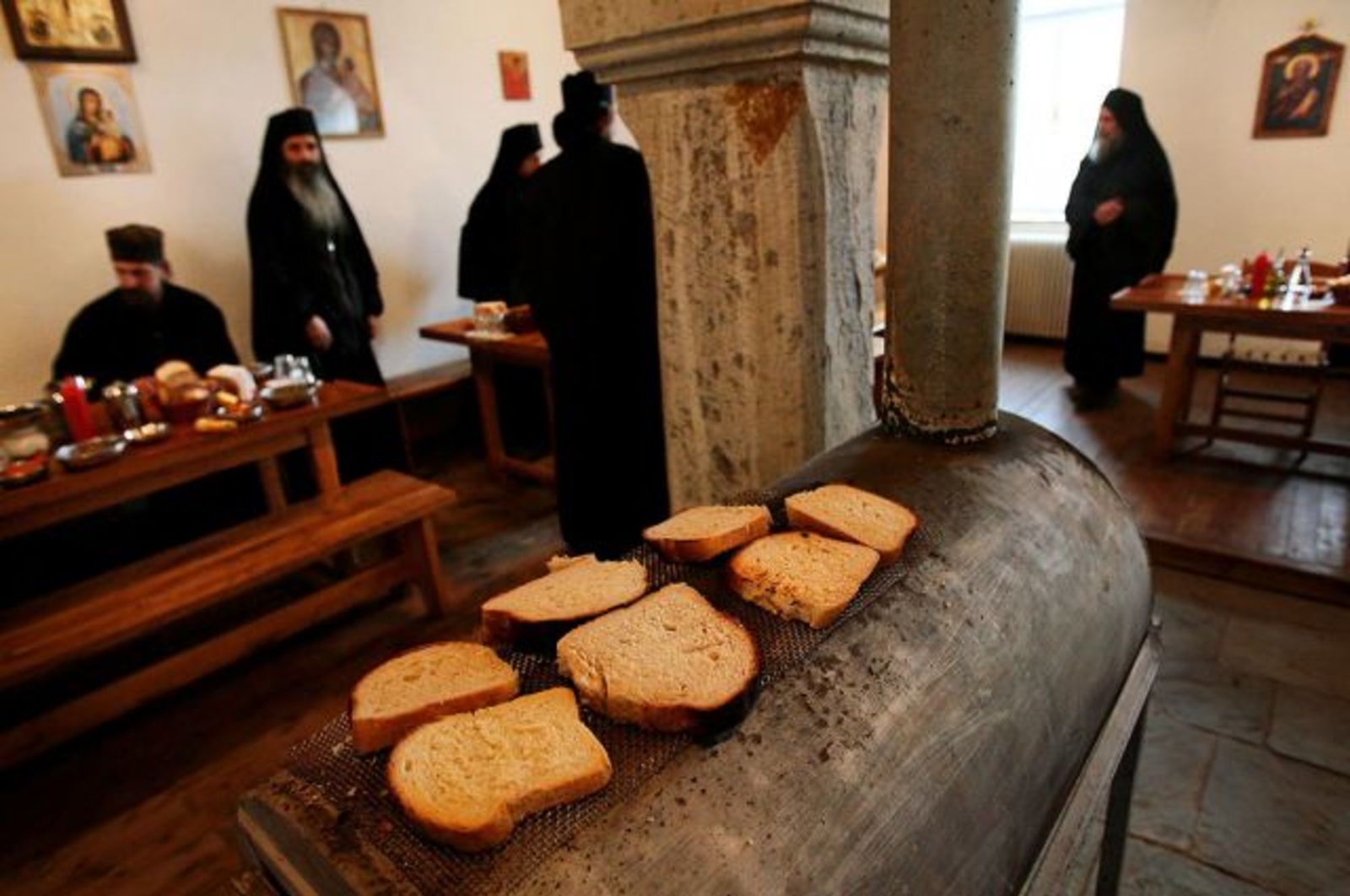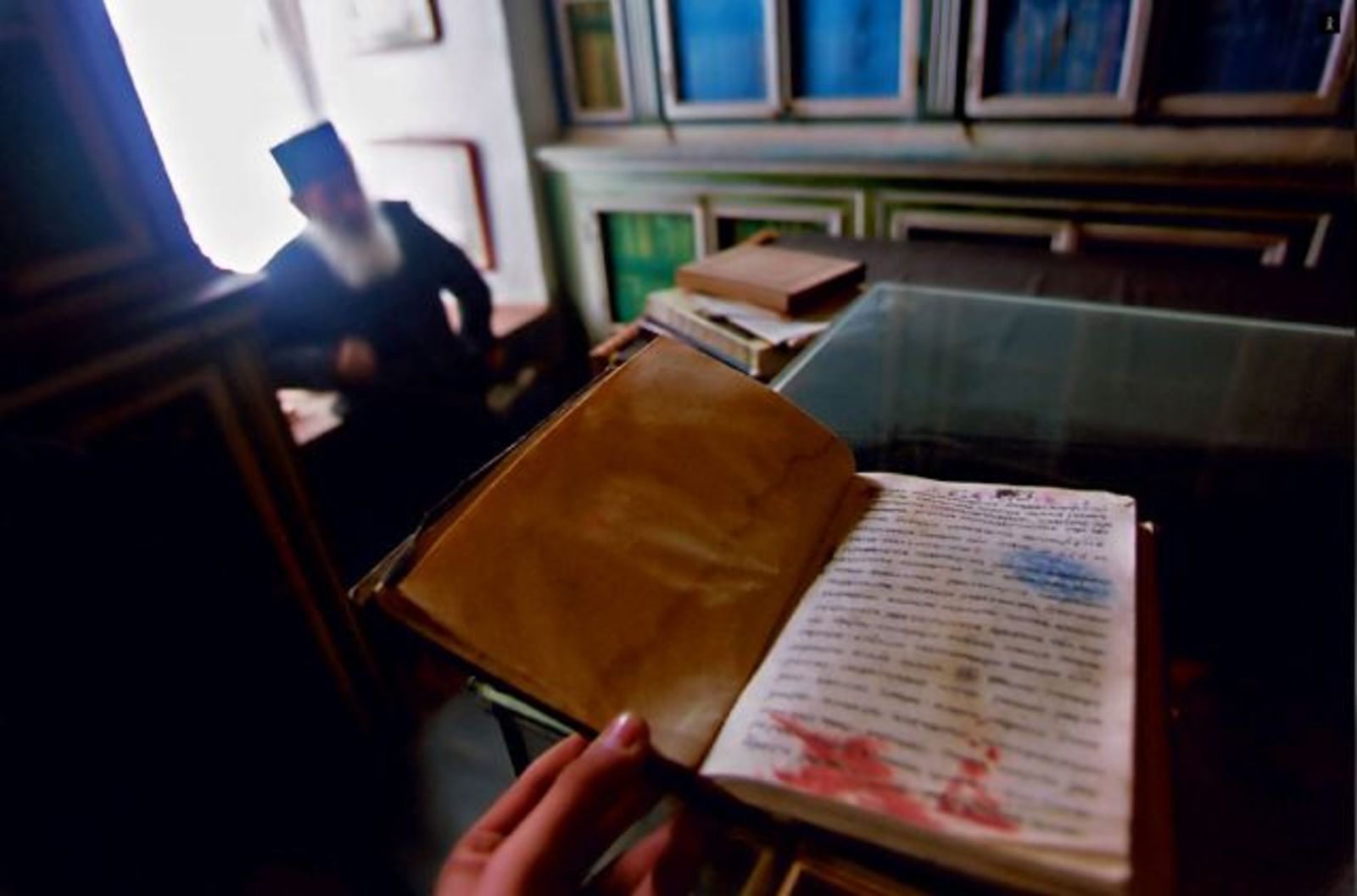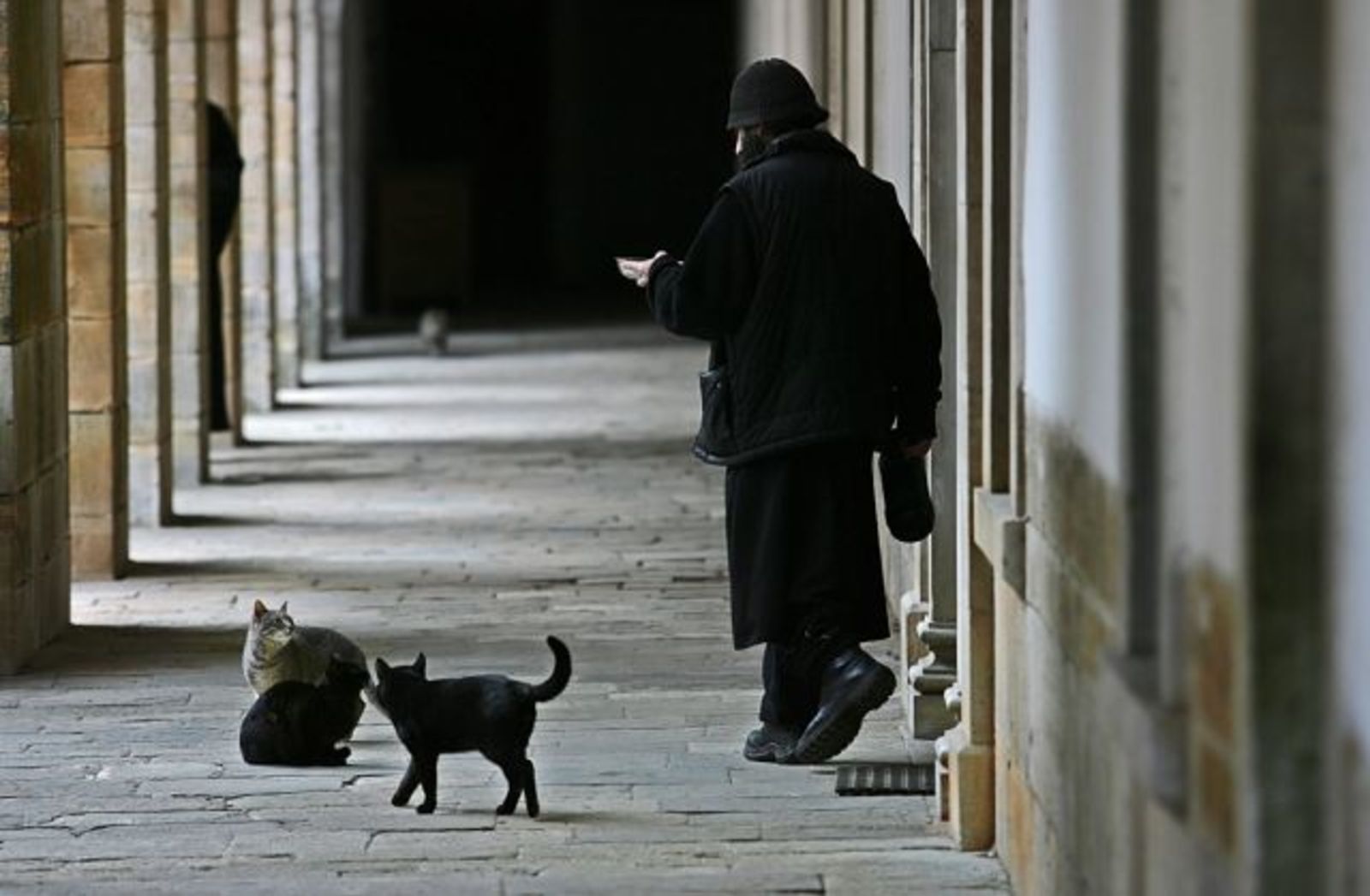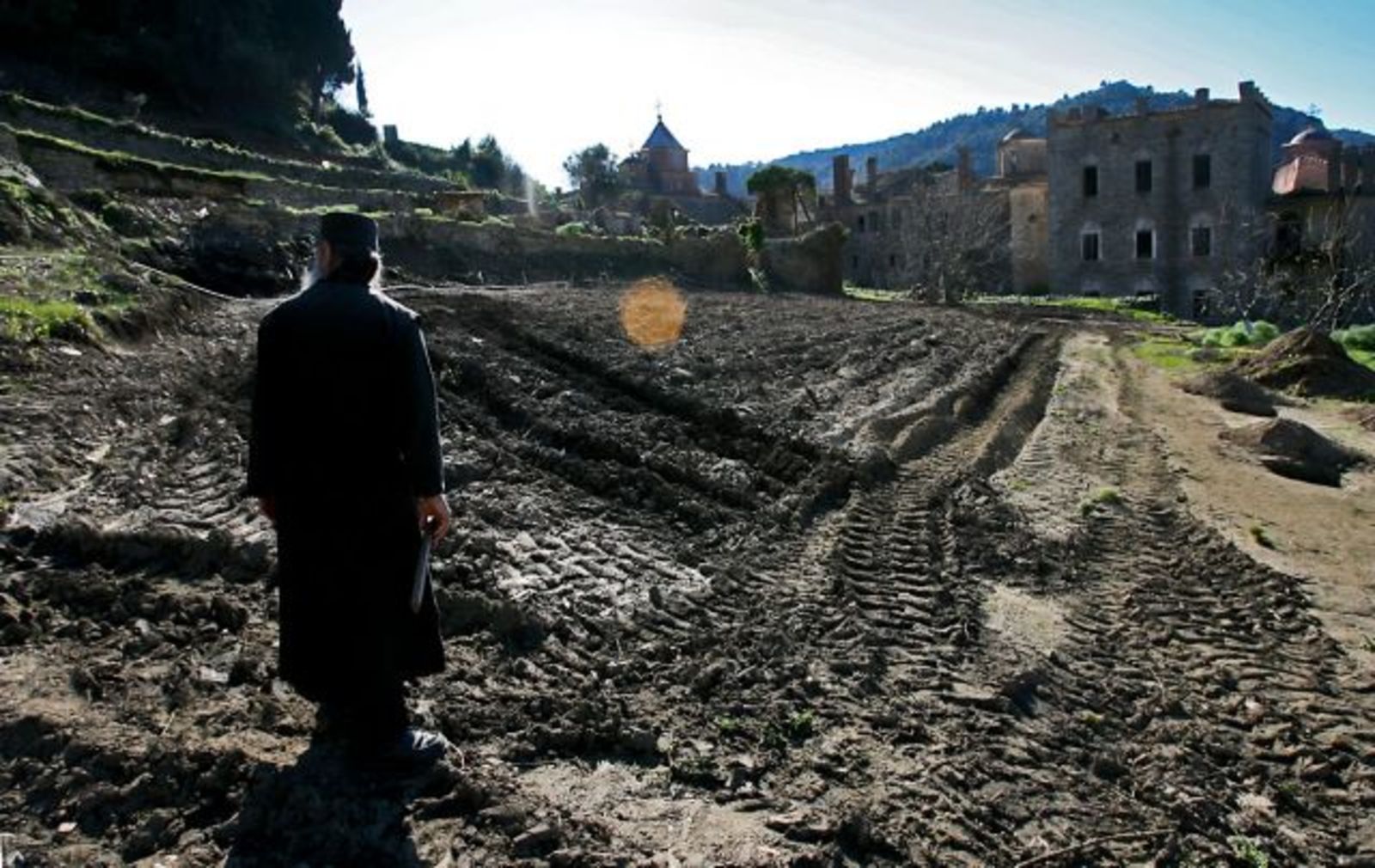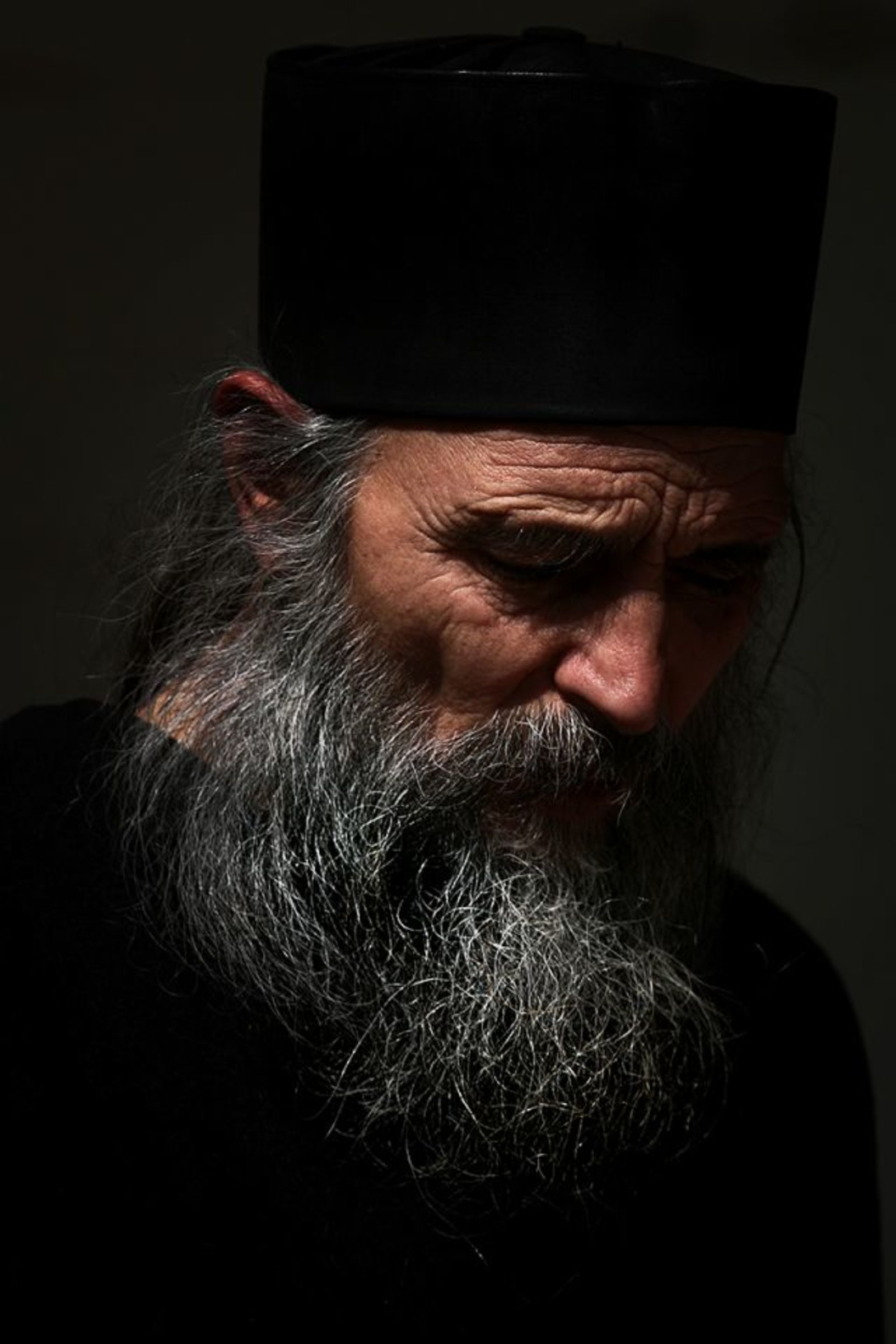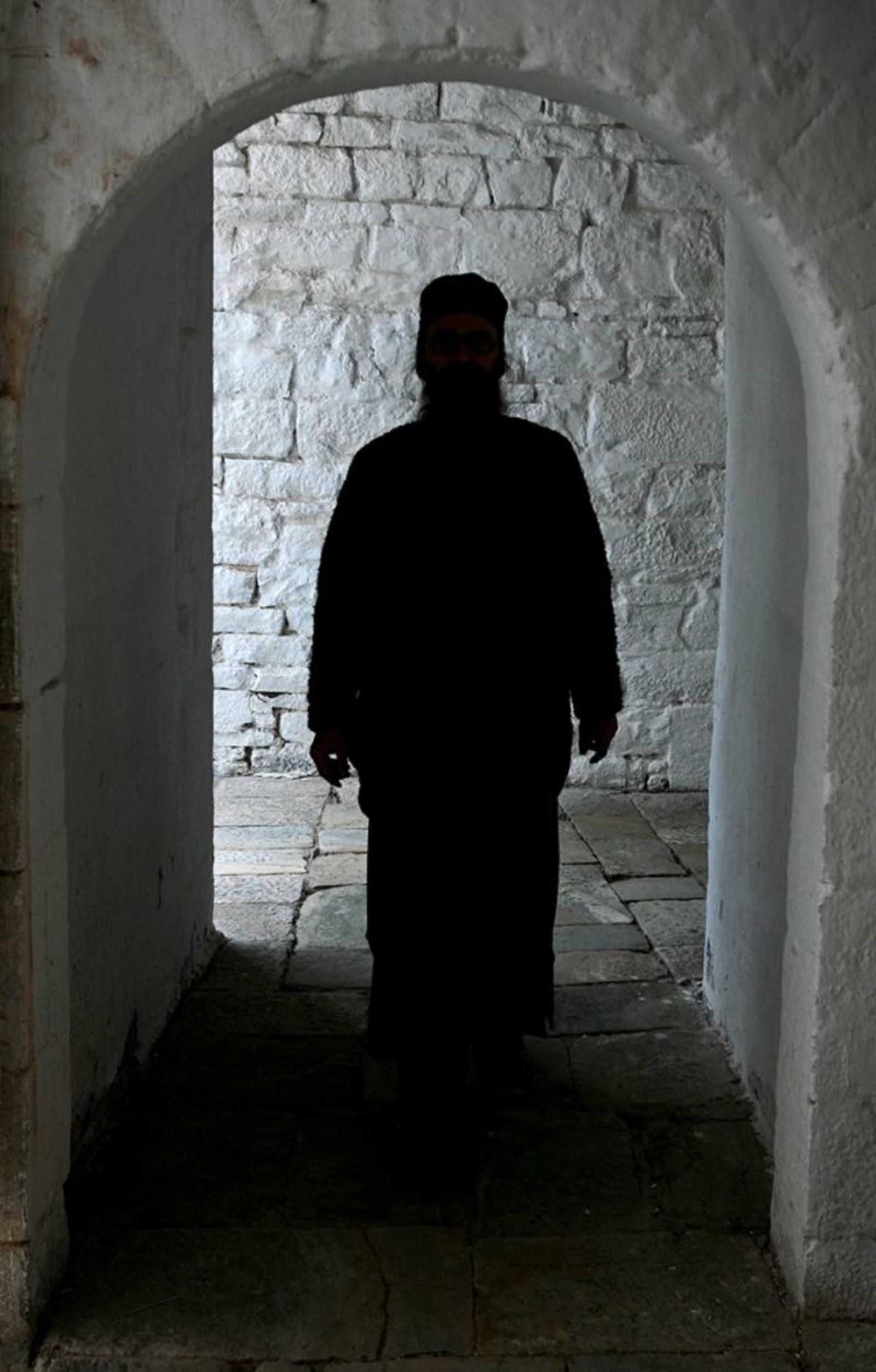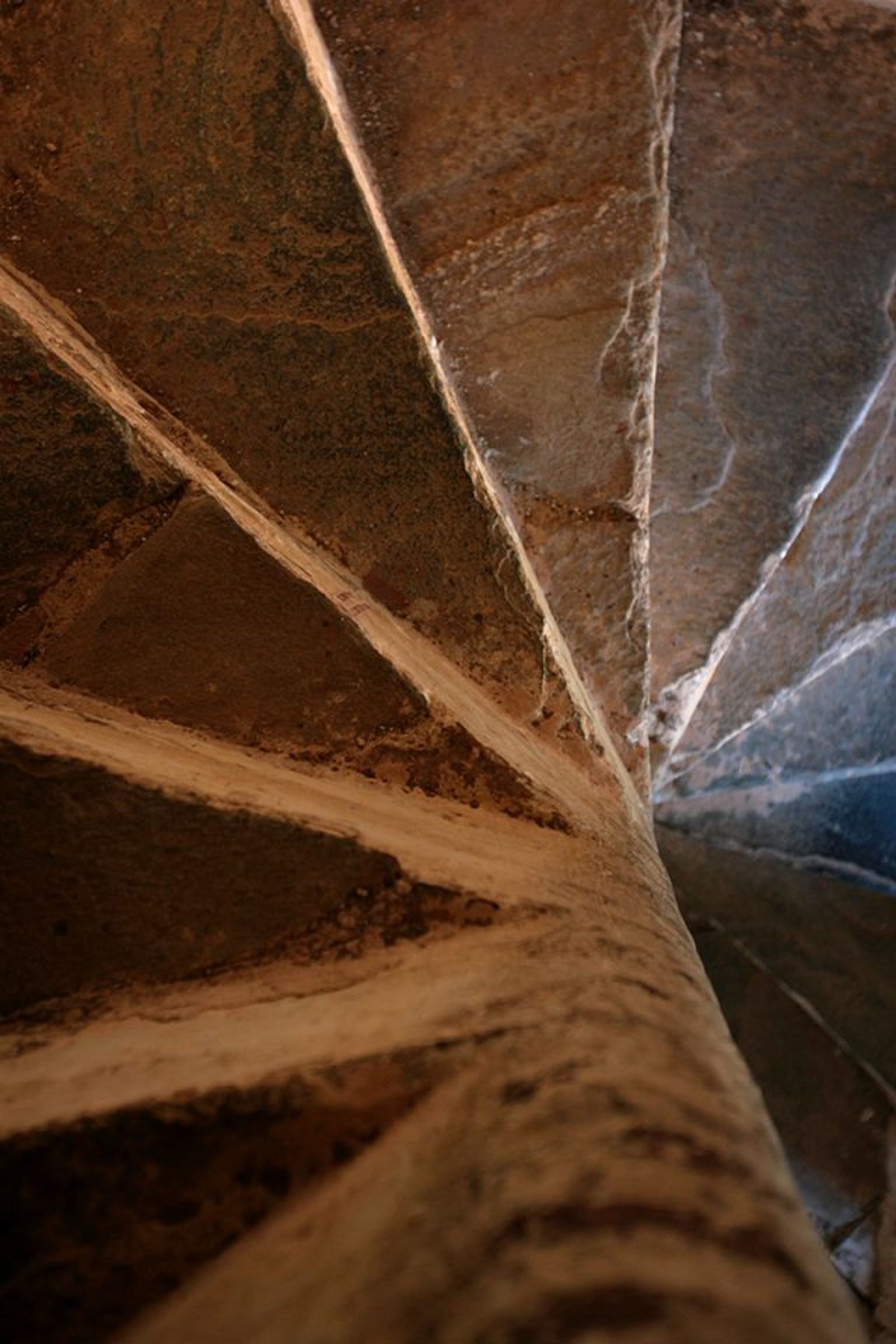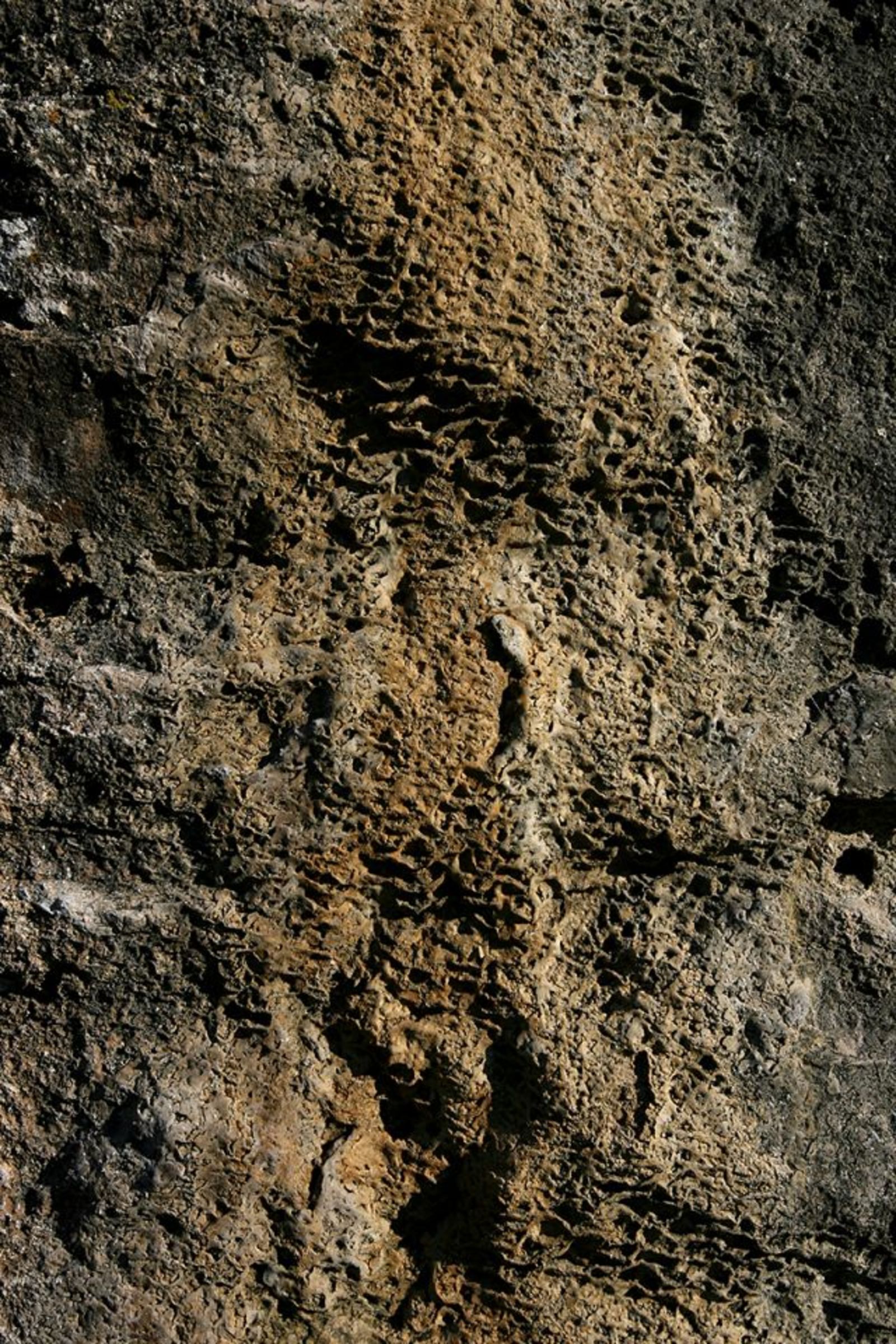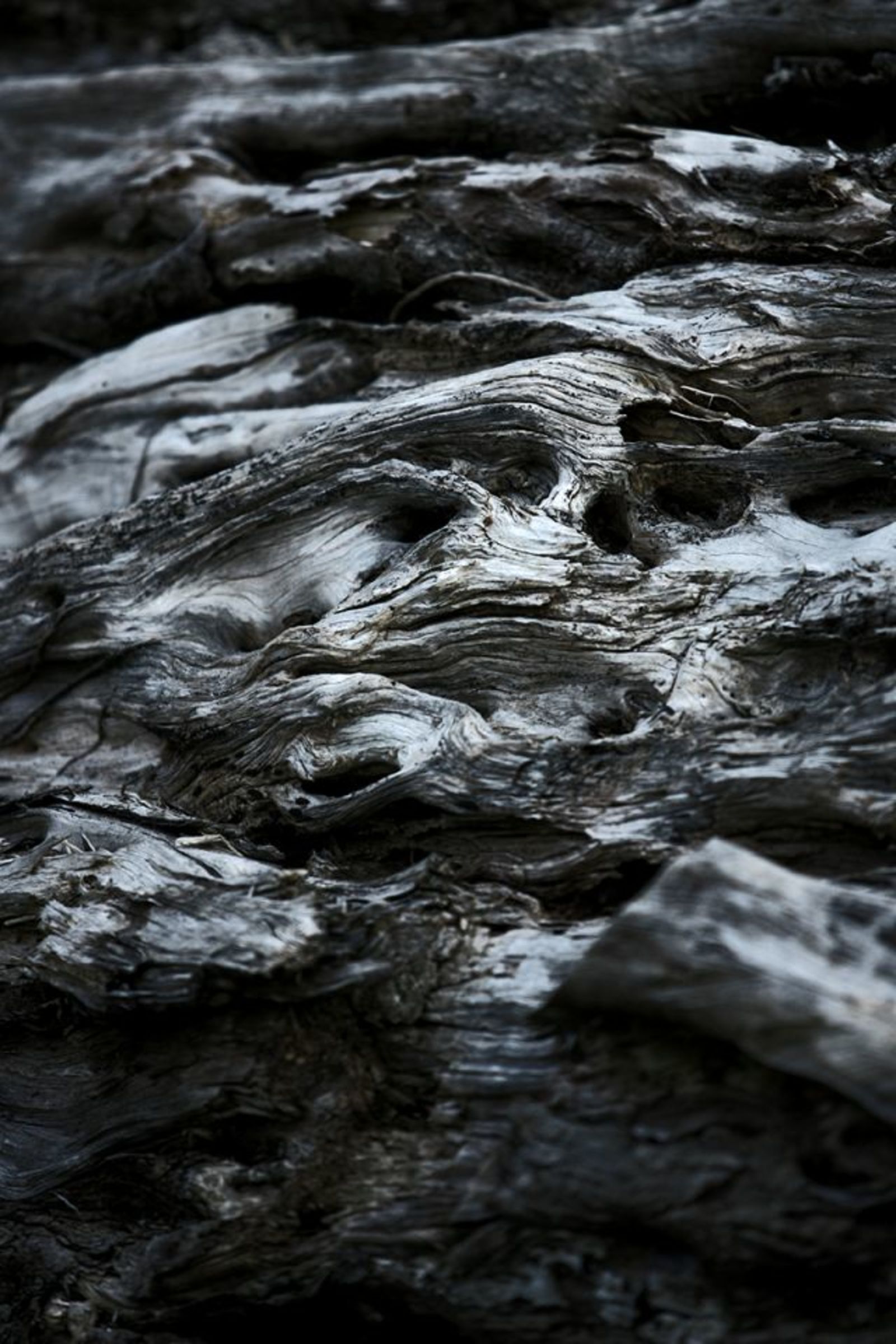ORTHODOXY, AN EXHIBITION ABOUT LIFE ON MOUNT ATHOS
“During my visits to the St. George Zograph monastery on Athos, I managed to seal the quiet moments of the daily life of the monks. My camera disturbed the peace in the crypt of the Zograph monastery and I managed to approach authentic medieval documents. I saw pictures painted centuries ago on the facades of the buildings. I was impressed by the unwavering faith with which legends of miracles that happened centuries ago are described. I heard stories of satanic generals who tempt the monastic brotherhood on a daily basis.
In accordance with the rules, an anonymous modesty is maintained behind the walls and photography is not desirable because it is a sign of vanity. During my travels I managed to win the trust of some of the brothers there and I was allowed to capture moments in their lives.”
Alexander Mikhaylov
Athos – historical background
Today, the eastern peninsula of Halkidiki, Athos, is one of the most sacred places for the Orthodox world, the “Monastic Republic” also known as the Holy Mountain. It brings together 20 monasteries, seventeen of which are Greek.
Access by women is forbidden. The ban dates back millennia and also applies to female animals. It began after the visit to Mount Athos by Byzantine princess Plakidia. According to legend, the Virgin Mary appeared to her and barred her from the place.
The exact date of the spread of monasticism on Mount Athos is not known. The first evidence of hermits who settled on the peninsula dates from the VII century. Official proclamation as a monastic centre was in 885 by Byzantine emperor Basil I. The founder of monasticism on Athos dormitory is considered to have been St Athanasius of Trebizond, who in 962-963 founded the first monastery on the peninsula, the Great Lavra. In the coming decades, more monasteries were built and their status confirmed. Ninth in the Mount Athos hierarchy is the St. George Zograph monastery.
Through the Zografski monastery, the Bulgarian Patriarchate is one of the four represented in Athos. Besides the seventeen Greek monasteries, there are a Russian and a Serbian monastery.
Zografski Monastery
The St. George Zograph monastery on Mount Athos originated probably from IX-X century. The earliest evidence of its existence dates from the year 980.
According to legend, it was founded by three brothers - Moses, Aaron and Ivan Selima from Ohrid in the year 919. In that era, spiritual retreat was an established practice and tradition in Bulgaria and gave the world St. Ivan Rilski. When the monastery was founded, the monks did not know who to choose to be the patron. They prepared wooden tablets on which to portray an icon with the image of their patron. They left these in the church, and gave themselves to fervent prayer, calling on the Lord to reveal the name of the saint. According to the legend, in the morning the monks were astonished to see on the board a portrait of St. George, and named the monastery "St. George Izograf ", meaning, “who portrayed himself”. The legend says that at the moment when this miracle happened, a monastery in Syria was attacked by Arabs, and the image of the icon of St. George suddenly disappeared. The monks heard a voice from heaven telling them that the miracle worker had chosen a new monastery and they should follow him there. This proved to be the Zografski monastery on Mount Athos.
Until the mid-19th century the monastery was inhabited not only by Bulgarian monks, but also by Serbians and no less Greeks, but gradually the place became exclusively Bulgarian. Thirty-seven monks live there now. Zografski Monastery, one of the largest monasteries on Mount Athos, remains the only Bulgarian monastery there. It occupies ninth place in the hierarchy of the Athos monasteries.
In the library, precious medieval manuscripts are kept, including one of the symbols of the Bulgarian Revival – the original manuscript of Paisii Hilendarski’s Slav-Bulgarian History. A curious fact is that the greatest treasures of the library are kept behind three padlocks. In a special room, the keys are kept by three brothers and the door opens only by agreement among them.
